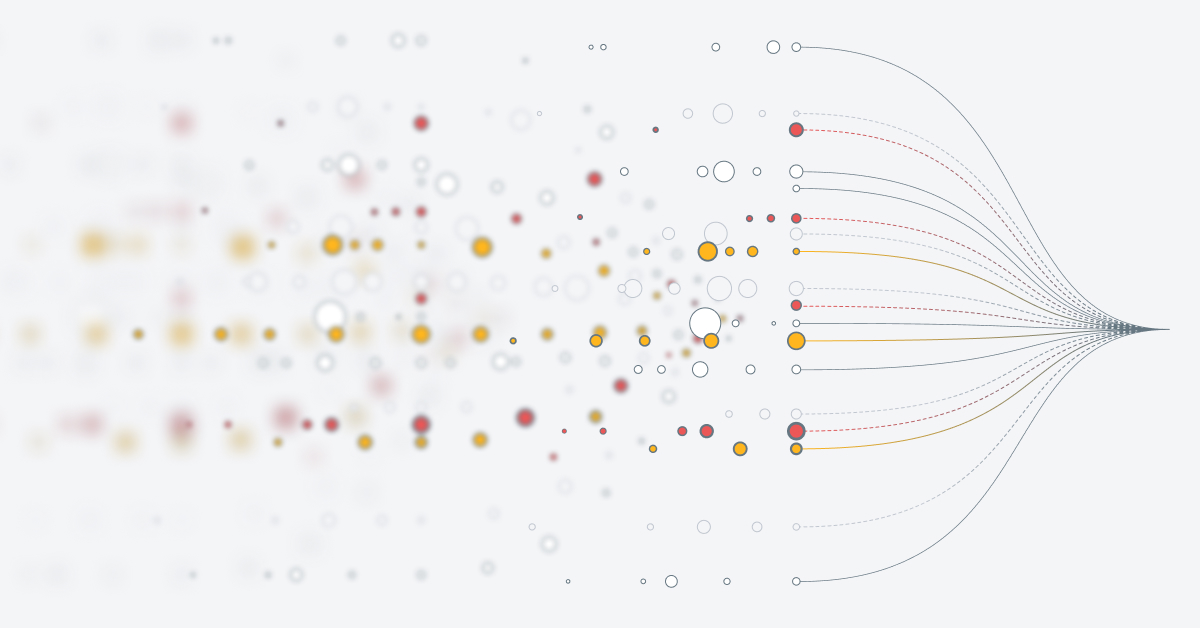The monitoring and incident management process is often chaotic and time-consuming for organizations. However, there is a better way to approach IT incidents and make your existing process function better.
Topology-powered observability solutions take the incident management process from chaotic to structured. Let’s look into how StackState’s solution improves and speeds up the incident resolution process.
Before StackState
Organizations must monitor each component in their technology stack to ensure it’s working correctly, is not experiencing errors, and has sufficient resources to function properly. Some of the challenges faced without an effective solution for IT observability include:
Too Many Alerts (Or Not Enough)
If your monitoring thresholds are set too aggressively, your team will be inundated with alerts. Not all of these will be critical alerts, and some may be false alarms. This hinders visibility into the important alerts that notify you of critical issues.
Conversely, if your monitoring thresholds are conservative, you may miss issues or only get alerted once the incident has already impacted your business.
Finding the Root Cause Takes Too Much Time
When an incident occurs, you want to find the root cause as quickly as possible. Taking a siloed and manual approach to your monitoring and incident management process only adds to the amount of time it takes to pinpoint the root cause.
Negative Customer Experience
Ensuring a great customer experience is key to keeping clients coming back and getting referrals. An incident management software that isn’t reliable can result in bad customer experience that, in turn, can negatively affect your bottom line and your brand reputation.
After StackState
StackState’s topology-powered observability solution helps organizations dramatically improve their existing incident management process. After implementing StackState, organizations will benefit from:
Unified Insights
Your organization can immediately see how changes made will impact your dynamic IT landscape. By unifying telemetry, log, and trace data from monitoring tools, you’ll eliminate silos and gain real-time visibility into dynamic, complex, and hybrid IT architectures. You’ll also get insight into all aspects of your topology, including blind spots caused by distributed systems.
Noise Reduction
Relationship-based observability software enables you to reduce the noise and alert fatigue of aggressive monitoring thresholds. It does this by relating changes to incidents and increasing anomaly detection accuracy.
Artificial intelligence allows organizations to identify irrelevant data, so you don’t waste precious time searching for the root cause in all the wrong places. This means you can quickly detect anomalies before a service impact occurs.
Faster Root Cause Analysis and Problem Resolution
With StackState’s deterministic root cause analysis, your organization can pinpoint the root cause quickly by understanding exactly what changed, where, and when. You’ll get insight into the services that were impacted and the ability to relate changes to incidents. The solution also enables you to eliminate war rooms and increase your team’s productivity.
IT Process Automation
Save time in the incident management process by automatically notifying the right people through actionable alerts that include fully contextualized situation analysis. This increases the chances of a first-touch resolution and eliminates the risk of costly escalations.
Reaping the Benefits of Topology-Powered Observability Software
StackState provides your organization with a leading topology-powered observability solution that will save time and money in the incident management process. Get a holistic view of all your data so you can quickly identify the root cause of all incidents. Organizations also benefit from fewer outages and a reduction in costs and resources.
Ready to change the way you monitor and manage IT incidents within your business? Sign up for a free guided demo today, and we’ll show you firsthand how StackState can help.



